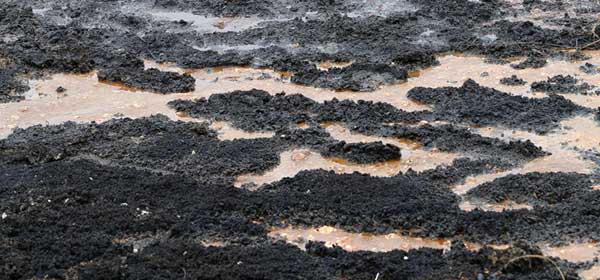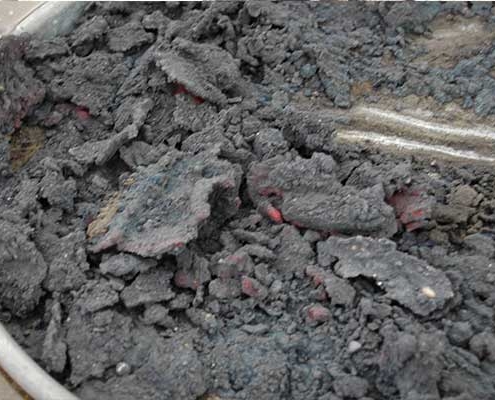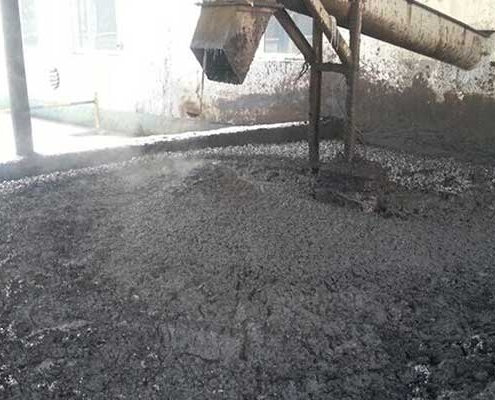Industrial sludge treatment
Introduction of industrial sludge
Industrial sludge is a mixture of solids and water, oil, chemical pollution, and organic matter produced by various industrial productions. Common industrial sludge comes from sludge of electroplating plants, tanneries, printing and dyeing plants, paper mills, and oil extraction. These sludges are more difficult to handle than other types of sludge because of their complex composition, high pollution, high viscosity, high oil content and high inorganic content. In recent years, the total amount of sludge in China has surged. The current annual sludge production is about 70 million tons, including about 35 million tons of municipal sludge and 35 million tons of industrial sludge. The sludge is very harmful, and the actual effective disposal rate is less than 25%. Therefore, the sludge treatment and disposal industry must be promoted to reduce secondary pollution. At present, how to properly handle industrial sludge has become an urgent problem for most governments in China.

Current situation of industrial sludge
Industrial sludge has very large differences depending on its source, mainly in its viscosity, hygroscopicity, contaminant properties, oil content, water content, organic matter ratio, and inorganic matter ratio. Compared with other sludges, the viscosity is high, the oil content is high, and the proportion of inorganic substances is high, which sometimes makes it more difficult to handle. For example, petrochemical sludge components are relatively complex and contain different types of heavy metals. The sludge volume is relatively large, and it contains a lot of fiber. The tanning industry has a large amount of mud, which can be used every day. Produce 40-80 tons of sludge/10,000 tons of wastewater, high organic content, due to the large amount of fur and blood pollution in the leather processing process, so the organic content is very high, toxic substances, S2- and trivalent chromium content is high, and three The conversion of valence chromium to hexavalent chromium has a carcinogenic effect. The electroplating sludge contains cyanide and heavy metals such as hexavalent chromium, copper, zinc, cadmium and nickel. Because the sludges in different industries are very different, it is not possible to simply apply the previous experience to deal with sludge from different industries. However, with the strengthening of environmental protection and people’s understanding of the limitations of existing sludge treatment and disposal technologies, the world Countries are investing heavily in research and development of new technologies to find more economical and rational sludge treatment solutions.
Main problems facing industrial sludge
First, the capacity of sludge disposal facilities is insufficient. Before the sludge disposal facilities are completed and put into operation, a large amount of sludge needs to be simply disposed of through wasteland, gravel pits, and garbage dumps. There is odor pollution and the risk of contamination of groundwater and soil. The surrounding residents and local governments have strongly responded.
Second, the key technologies in the process of disposal still need to be further broken. For example, sludge source reduction technology is still under discussion; sludge compost covers a large area, and the odor emitted during the composting process has not been effectively solved; the final outlet of the product after the sludge lime is dried is not resolved; Environmental risks for agricultural use after composting remain.
Third, the industrial policy guarantee system has not been established.
Analysis of sludge treatment technology
The main technologies for sludge treatment and disposal include: landfill, composting, drying and incineration, which are characterized by:
Landfill
The measures are simple, but they occupy a large area and have large environmental risks. They are mainly suitable for scattered and small amounts of sludge disposal;
Compost
Make full use of the nutrients in the sludge, turn the sludge into agricultural fertilizer, but occupy a large area, and is mainly suitable for areas with rich land resources;
Dry out
By reducing the water content, the sludge can be reduced, and the dried sludge can be reused as fertilizer and fuel, but the cost is higher;
Incineration
It can completely realize the harmless disposal of sludge, but the cost is high.




